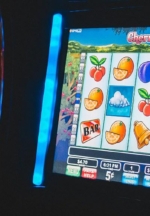
Slot games have become a popular form of entertainment for casino enthusiasts worldwide. Whether you enjoy playing at land-based casinos or prefer the convenience of online gambling, understanding the concept of slot variance is crucial. Slot variance, also known as slot volatility, refers to the risk factor associated with a slot game and determines the frequency of winning combinations and the average payout size.
When it comes to classic slots games, volatility plays a significant role in determining your winnings in the short term. It is closely related to the return-to-player (RTP) rate, which represents the percentage of total bets paid back to players over an extended period. Slot volatility measures how often a slot will likely hit a winning combination and its average payout size.
There are three primary levels of slot variance: high, medium, and low. Each level has its characteristics and appeals to different types of players, depending on their risk tolerance and bankroll size.
High-Variance Slots
High-variance slots are known for their high-risk, high-reward nature. These games offer less frequent winning combinations but the potential for significant payouts when they do hit. They are suitable for players with a larger bankroll and a willingness to take risks. High-variance slots require patience and perseverance, as it may take numerous spins before landing a substantial win.
Popular high-variance slots include Bonanza by Big Time Gaming, a bonus round with 117,649 winning combinations and the potential for massive multipliers. Another notable high-variance slot is 300 Shields by NextGen, which offers 300x multipliers in the free spins bonus round and the chance to win up to 1,000x your bet.
Medium-Variance Slots
Medium-variance slots strike a balance between risk and reward. They offer a blend of moderate-sized wins and occasional bigger payouts. These slots are suitable for players who enjoy a mix of excitement and the potential for significant wins without risking a substantial bankroll. Medium-variance slots provide a good compromise between the low and high-variance options.
Some well-liked medium-variance slots are Jack and the Beanstalk by NetEnt and The Wish Master, also by NetEnt. In Jack and the Beanstalk, you can get free spins and have a shot at winning a jackpot of 60,000 coins. The Wish Master has different bonus features, allowing you to win based on your bet amount.
Low-Variance Slots
Low-variance slots are perfect for players who prefer a safer style of gambling. These slots give out smaller wins more often, allowing players to enjoy the game longer. While the payouts may not be as big as in high-variance slots, low-variance slots are less risky and suitable for players with limited budgets.
Two famous low-variance slots are Sunny Shores by Yggdrasil and Starburst by NetEnt. In Sunny Shores, you can expect to win small amounts frequently, and the game includes exciting features like expanding wilds and respins. But, Starburst regularly awards smaller prizes. They also have a special respin feature that activates when wild symbols appear.
Choosing the Right Volatility Level
When it comes to selecting the right slot game with the appropriate volatility level depends on your personal preferences and playing style.
If you like taking big risks and have a lot of money to play with, high-variance slots are the way to go. These games have the potential for huge payouts, but you must be patient and prepared for periods of not winning.
If you have a small budget and prefer winning more often, even if the amounts are smaller, low-variance slots are a better choice. These games let you play for longer without spending too much money.
Medium-variance slots are a middle ground for players who want to balance risk and reward. You can enjoy a mix of small and big wins, keeping the excitement going without risking too much.
Calculating Slot Volatility
Determining the volatility of a slot game is a complicated task. It involves looking at different things. It includes the paytable, pay lines, and game mechanics. There isn’t a standard way to calculate volatility. But some indicators can give you a general sense of a slot’s variance.
Factors like the bet per line, total win per spin, and overall game performance can help you estimate the volatility of a slot. By comparing these factors between different slot games, you can understand how variable or unpredictable each game is.
In Conclusion
To make smart choices when playing slots, it’s important to understand the different levels of variance. This helps you decide which game is right for you. Some games have high risks but offer big rewards. Others have lower risks and give you smaller wins more often. Some games strike a balance between the two. Knowing the volatility level helps you pick the slot game that matches your preferences and budget.
Always remember to play responsibly and set limits on your gambling. Slot games are meant to be fun, but they also involve luck. By understanding slot variance and choosing games that suit your style, you can have a better experience and enjoy spinning the reels.



















